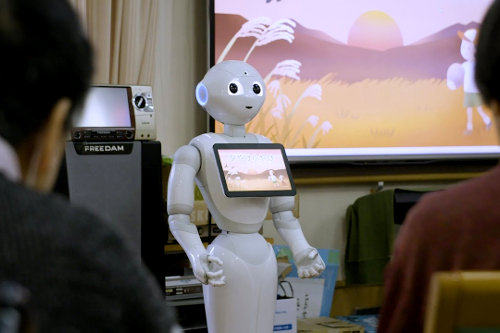With massive technological advancements always coming thick and fast, we can expect more incredible things every day. When we think about the future of technology, we often think about robots. Whilst we might not have flying cars yet, there’s definitely a future for robots within business.

photo credit: YouTube
With the long term worry that the advancement of robots will mean a loss of jobs for human beings, many companies are developing collaborative robots (or “cobots”) designed to work alongside and in close proximity with humans to make our lives easier and help free up the workforce for jobs only humans can do.
It might surprise you to learn that cobots are already in use in sectors from farming to hospitality, from the automotive industry to manufacturing. As we move into the future, they will most likely be found in many other places and situations too. Which industries and areas could be improved by cobots? Read on for a few unexpected cobot uses that are already happening and find out more about cobots on RNA Automation.
Cobots in farming and animal care
You might think that farming would be one of the last areas to include robots, but technology is already changing the way farms work. Farmers are taking advantage of cobots in feeding, handling, and even in herding. To herd the cows or sheep, special drones are used. These have recorded barking sounds to herd the sheep and humans can manoeuvre and direct them from the comfort of their farmhouse or office.
Cobots were also recently used for a project by Glassworks Barcelona and Greenpeace Spain where the goal was to get 250,000 people and 250,000 bees to sign a petition against the use of pesticides that are dangerous to bees. Of course, bees can’t really sign petitions, but bees would be against these pesticides. Glassworks and Greenpeace used cobots to paint 250,000 digital signatures of bees for this beautiful project.
Cobots in healthcare
Cobot medical assistants can free up nurses and doctors and allow them to help more patients by monitoring vital patient statistics and alerting nurses when a human presence is needed. These robotic assistants also automatically enter information into the patient electronic health record.
Robots are also assisting in surgery, allowing doctors to conduct surgery through a tiny incision instead of an inches-long incision. During a cobot procedure, the surgeon will use controls and “puppet” the cobot to use hyper-precise and often tiny incisions. The surgeon is in control the whole time, but the cobot is capable of a level of precision that humans can’t master.
Cobots in hospitality
Cobot bartenders are already in use on cruise ships and in hotels and pubs worldwide. With real living people still around to help out with a human touch, many hotels (including the Hilton Hotel chain) have embraced cobot concierge services. Using artificial intelligence, they can interact with them and answer questions too. The robot learns from each interaction and improves its answers, becoming more intelligent from each conversation.
There are many bars also providing cobot bartenders. You choose and tailor your drink via app and then it gets created by robot arms in front of you! Humans are still around to ensure no errors are made and to make sure your drink is perfect.
These are just a few areas where cobots are already in use and showing that they are beneficial to us humans. They have not taken our jobs but successfully work alongside us to make some tasks easier and less stressful. Do you think hospitality and retail will ever be fully staffed by cobots? Where do you think we’ll see cobots next?


